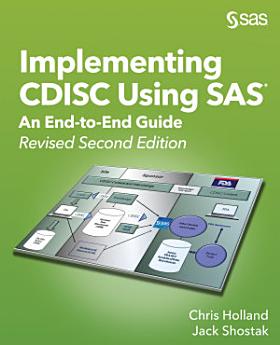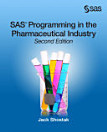Implementing CDISC Using SAS: An End-to-End Guide, Revised Second Edition, Edition 2
About this ebook
Implementing CDISC Using SAS: An End-to-End Guide, Revised Second Edition, is an all-inclusive guide on how to implement and analyze the Study Data Tabulation Model (SDTM) and the Analysis Data Model (ADaM) data and prepare clinical trial data for regulatory submission. Updated to reflect the 2017 FDA mandate for adherence to CDISC standards, this new edition covers creating and using metadata, developing conversion specifications, implementing and validating SDTM and ADaM data, determining solutions for legacy data conversions, and preparing data for regulatory submission. The book covers products such as Base SAS, SAS Clinical Data Integration, and the SAS Clinical Standards Toolkit, as well as JMP Clinical. Topics included in this edition include an implementation of the Define-XML 2.0 standard, new SDTM domains, validation with Pinnacle 21 software, event narratives in JMP Clinical, STDM and ADAM metadata spreadsheets, and of course new versions of SAS and JMP software. The second edition was revised to add the latest C-Codes from the most recent release as well as update the make_define macro that accompanies this book in order to add the capability to handle C-Codes. The metadata spreadsheets were updated accordingly.
Any manager or user of clinical trial data in this day and age is likely to benefit from knowing how to either put data into a CDISC standard or analyzing and finding data once it is in a CDISC format. If you are one such person--a data manager, clinical and/or statistical programmer, biostatistician, or even a clinician--then this book is for you.
Ratings and reviews
About the author
Chris Holland has been a SAS user since 1990 in a variety of settings ranging from academia, contract research organizations, regulatory agencies, and both small and large pharmaceutical and biotechnology companies. He was first introduced to CDISC while working as a statistical reviewer at the Center for Drug Evaluation and Research in the U.S. Food and Drug Administration. There he served as the technical lead for the SDTM/ADaM Pilot Project FDA review team and invented an early version of the MAED Service, an adverse event review tool that made use of data standards and is currently in production at the FDA. Since leaving the FDA, Holland continues to be active in the CDISC community, particularly with the ADaM team. He received an MS in statistics from the University of Virginia, a BS in statistics from Virginia Tech, and is an Accredited Professional Statistician by the American Statistical Association.
Jack Shostak, Associate Director of Statistics, manages a group of statistical programmers at the Duke Clinical Research Institute. A SAS user since 1985, he is the author of SAS Programming in the Pharmaceutical Industry, and coauthor of Common Statistical Methods for Clinical Research with SAS Examples, Third Edition, as well as Implementing CDISC Using SAS: An End-to-End Guide. Shostak has published papers for the Pharmaceutical SAS Users Group (PharmaSUG) and the NorthEast SAS Users Group (NESUG), and he contributed a chapter, "Reporting and SAS Tool Selection," in the book Reporting from the Field. He is active in the Clinical Data Interchange Standards Consortium (CDISC) community, contributing to the development of Analysis Data Model (ADaM), and he serves as an ADaM trainer for CDISC. Shostak received an MBA from James Madison University and a BS in statistics from Virginia Polytechnic Institute and State University.




